
Jaisalmer, the golden city of the Thar Desert
![]() Jaisalmer is a diadem of gold and sand set gracefully down in the arid wastes of the Thar desert. The beauty of this honey-coloured city is matched only by the luminous desert all around it, where camel caravans laden with precious goods once tramped across the dunes.
Jaisalmer is a diadem of gold and sand set gracefully down in the arid wastes of the Thar desert. The beauty of this honey-coloured city is matched only by the luminous desert all around it, where camel caravans laden with precious goods once tramped across the dunes.

The name of Jaisalmer means “hill fort of Jaisal”. It was founded by Jaisal Singh, a Rajput of the Bhati warrior clan. The Rajput kings reigned from 1156 to 1949, when their state was incorporated into Rajasthan.
Jaisalmer owes its name of “golden city”, to the colour of the sandstone it is built from. The warm yellow stone and the amazingly sophisticated, intricately-worked merchants’ houses (havelis) give the town a unique charm and atmosphere.

This golden city owes its historical importance to its wealth and its function as a staging point on the caravan route between India, the Arab world and Africa. Camels coming through carried such goods as silk, indigo, sugar, dried fruit and opium.
Desert festival
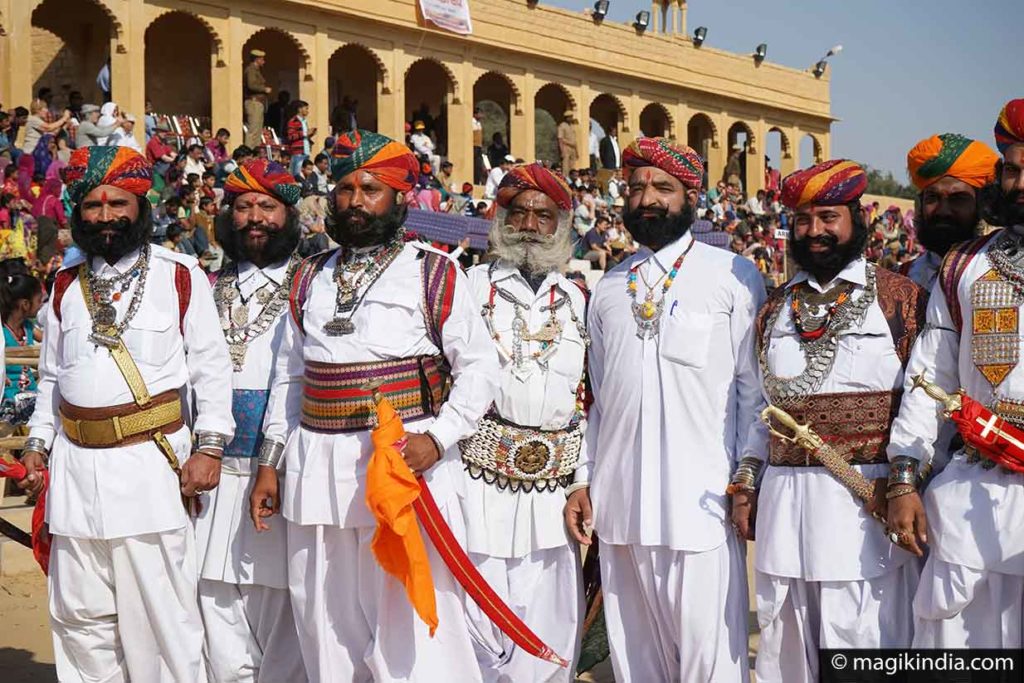
Each year in January or February Jaisalmer and during two days, golden city of the Thar desert, becomes a colourful three-day showcase for Rajasthani folk culture. Camel procession, competitions such as turban tying and longest moustache take place, as well as the Miss Desert and Mr. Desert contests and folk music and dance during evenings….
KNOW MORE ABOUT ITAnd now, let’s visit Jaisalmer!
Jaisalmer is divided into the upper town inside the ramparts and the lower town clustered round the outside.
Jaisalmer Fort
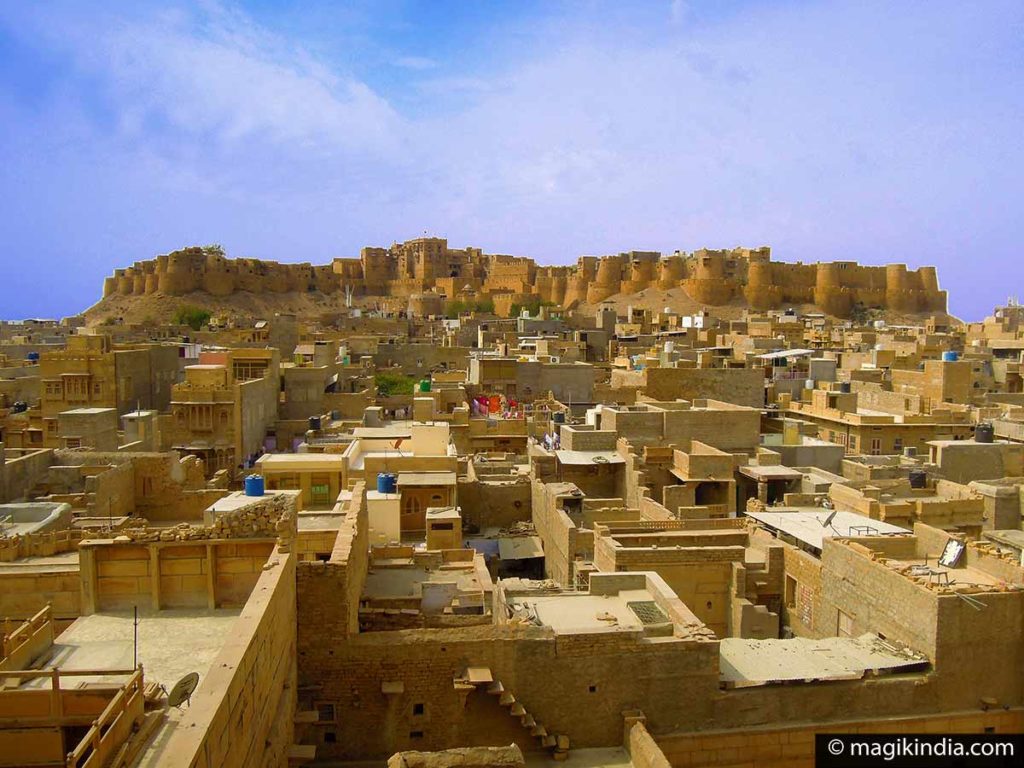
Sonar Quila, the Golden Fort stands on Trikuta Hill in the heart of the city. It is 76m tall at highest point and is surrounded by 5km of ramparts. It is one of the world’s largest forts.
It was built by Rawal Jaisal in 1156, in an architectural style combining Rajput and Mughal elements.
Among the remarkable monuments within its walls are the Raj Mahal or royal palace and seven Jain temples. One can to amble for hours through its narrow lanes with their colourful houses.
Raj Mahal Palace (fort)

Located just after the fourth gate of the fort, the Raj Mahal Palace, built in the 15th century, is one of the finest examples of Jaisalmer’s architecture.
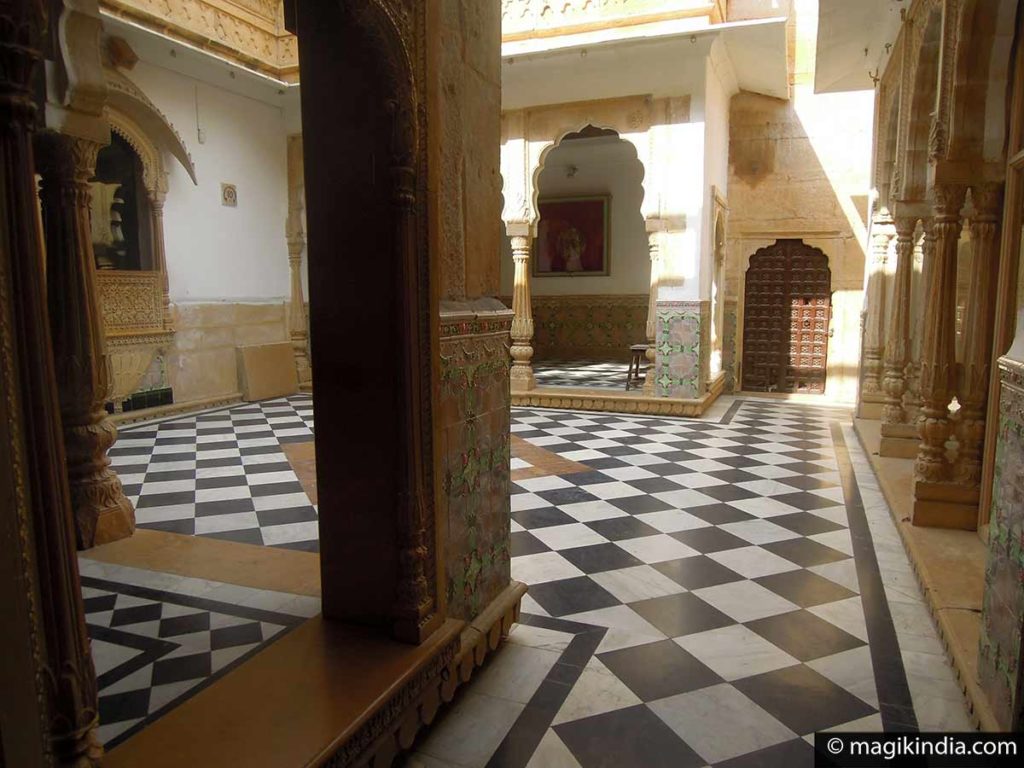
The seven-story building, which was where of the royal family of Jaisalmer was staying, provides a glimpse into life of the rulers of that time.
A terrace provides a bird’s-eye view of Jaisalmer and the ramparts. Some of the rooms can be visited, including the king’s apartments. The palace also serves as a museum for a collection of weapons and artefacts.
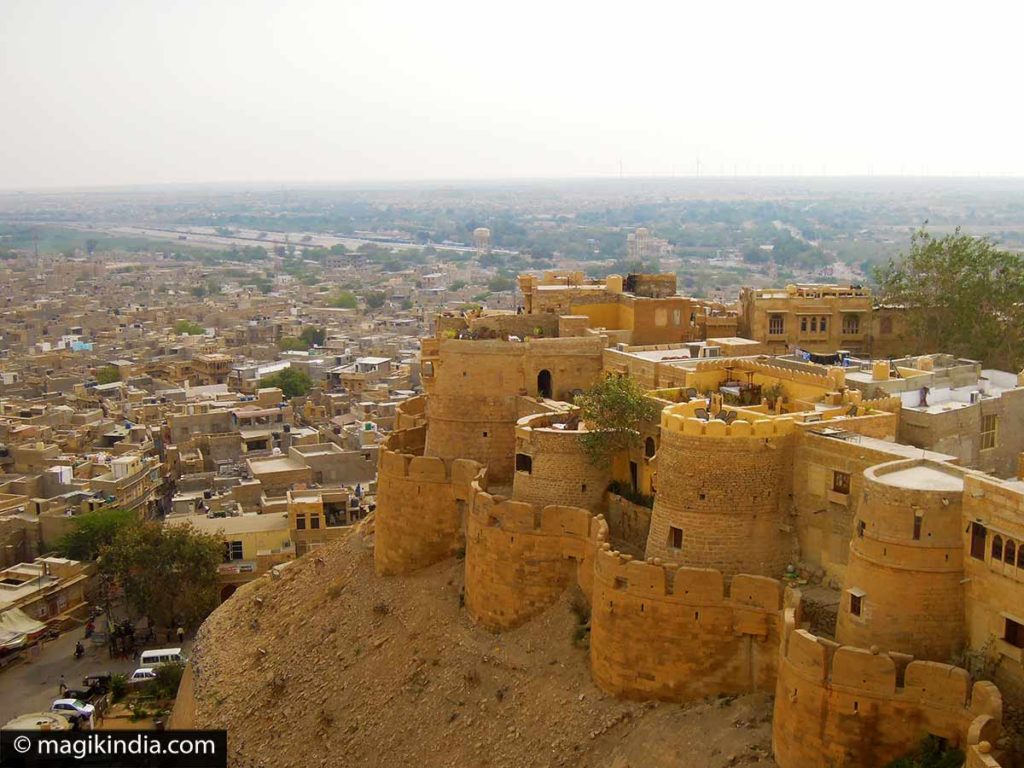
Jain temples (fort)

The seven interconnected Jain temples inside Jaisalmer Fort are quite simply splendid. It’s an absolute must-see visit.

They were built between the 15th and 16th centuries and are dedicated to the seven Tirthankars (Jain saints) Chandraprabhu, Rikhabdev, Parasnath, Shitalnath, Shantinath and Kunthunath.
The interiors, with finely carved white marble in the Dilwara style, make them fitting rivals to Ranakpur temple. Absolutely not to be missed.

Havelis (lower town)
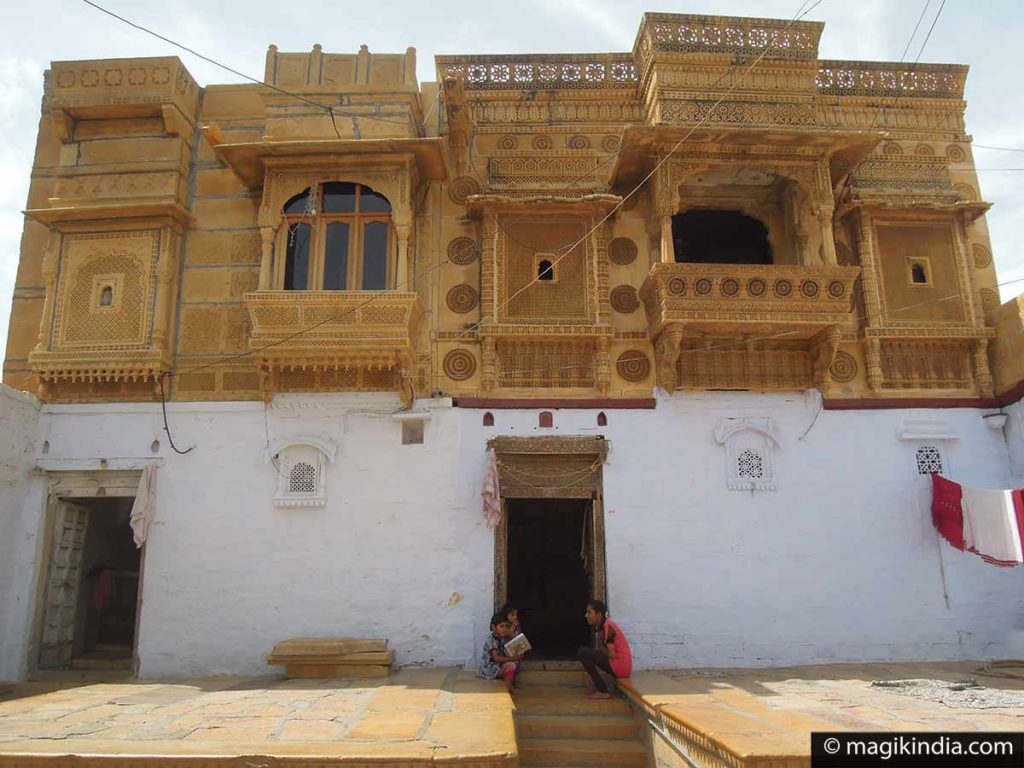
The havelis (mansions) of Jaisalmer are among the most beautiful in all of Rajasthan. Three of these mansions stand out, the Patwah ki haveli, the Nathmal ki haveli and the Salam Singh ki haveli. All around these havelis, there are more modest houses, but which are also worth a look. Just get lost in the alleys of the lower town and do not hesitate to ask the locals if you can visit their houses; in addition to the visit, you may even be invited to drink a chai together with the whole family.
Patwa Ki Haveli

The Patwa Ki Haveli is the most impressive of Jaisalmer’s havelis and one of the largest in Rajasthan. It is part of a set of five havelis aligned in a narrow passage started in 1800 by the Patwas. It took 55 years to build.
The Patwas were successful bankers and traders so that at some point they were even called upon to mop up the city’s public deficit. However, after a reversal of fortune, they sold their haveli to Jeevanlalji Kothari, a native of Jaisalmer.
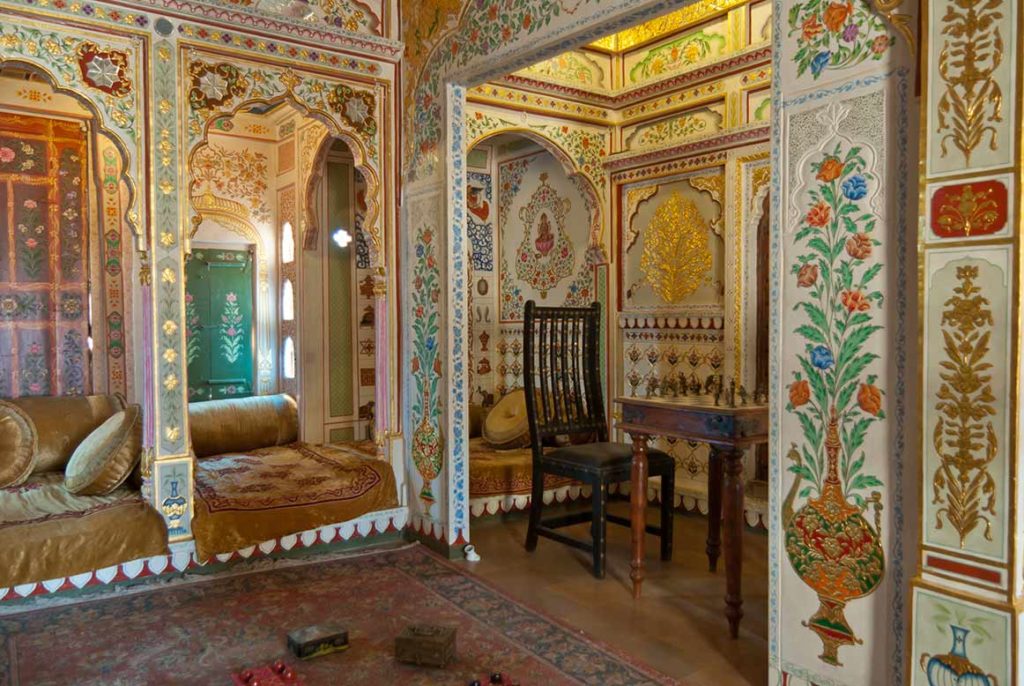
The intricacy of the delicately carved façades of this haveli is breathtaking. The interior is just as sumptuous with decorative items imported from various countries and beautiful murals.
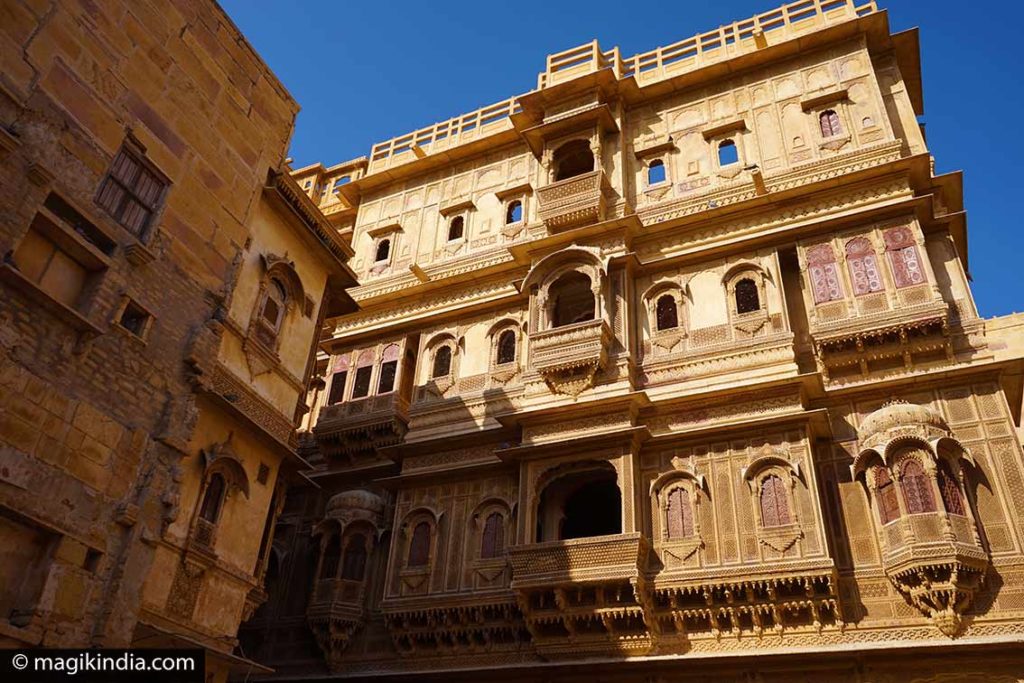
Nathmal Ki Haveli

The Nathmal Ki Haveli was built in the 19th century and was used to house the prime ministers.
There is an interesting tale about the building of the mansion. Its architects, Hathi and Lulu, happened to be brothers. It is said that they started building the two sides simultaneously, and when the haveli was completed the symmetry of the façade was found to be less than perfect.
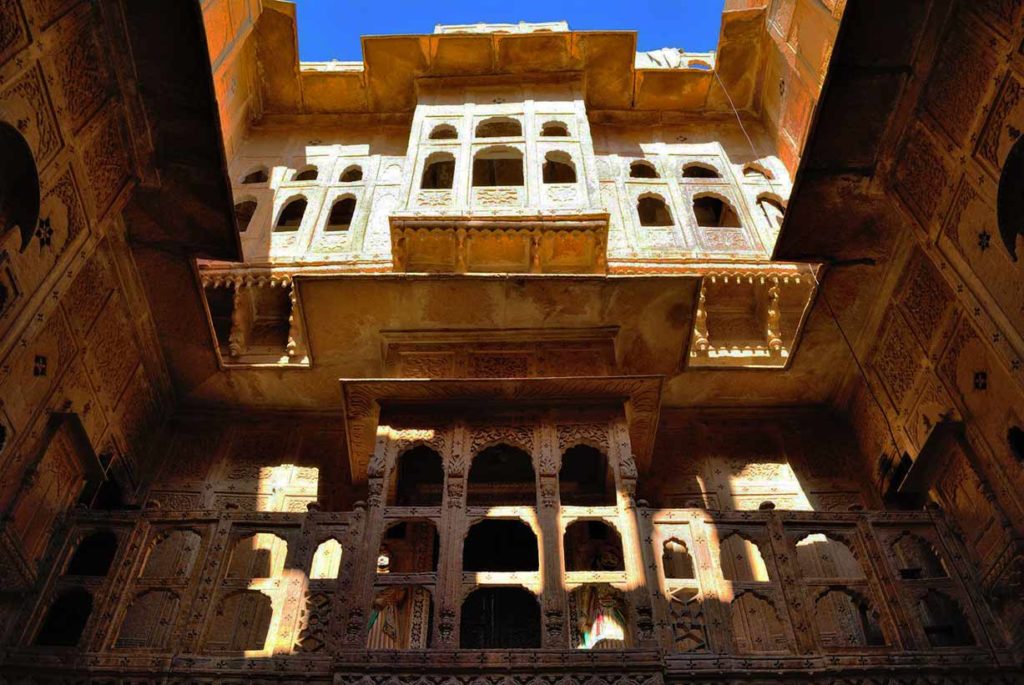
The exterior of the haveli is minutely carved out of yellow sandstone with two guardian elephants on either side of the facade. The entrance in the middle of the building leads to a beautiful loggia courtyard.
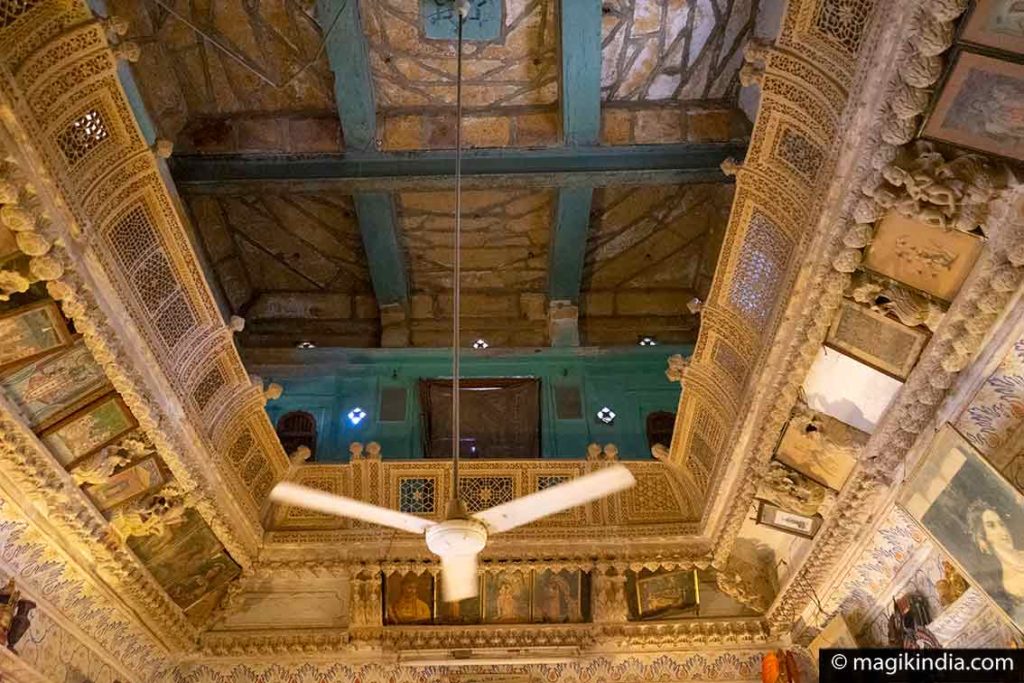
The house is private property, only a room on the 1st floor is open to the public and houses a boutique with camel bone objets. Originally it was the reception room of the haveli. It keeps from this time fine serrated sculptures and delicate paintings about the life of the Hindu god Krishna.
Salam Singh Ki Haveli
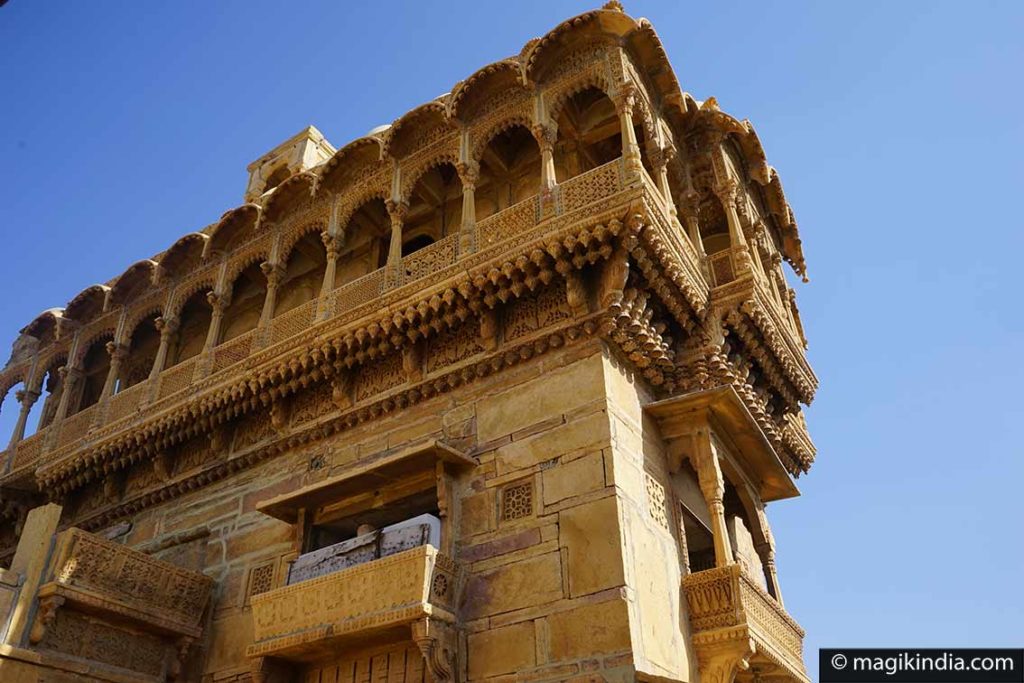
Salam Singh Ki Haveli is the last of the three most significant havelis in Jaisalmer.
It was built in 1815 by Salim Singh, prime minister of the kingdom, and occupied by the Mehta family, a highly influential Jaisalmer family in those days.
The haveli boasts 38 balconies, each differently designed. The front façade looks like the prow of a ship, and the place is sometimes called Jahaz Mahal, the “ship palace”.
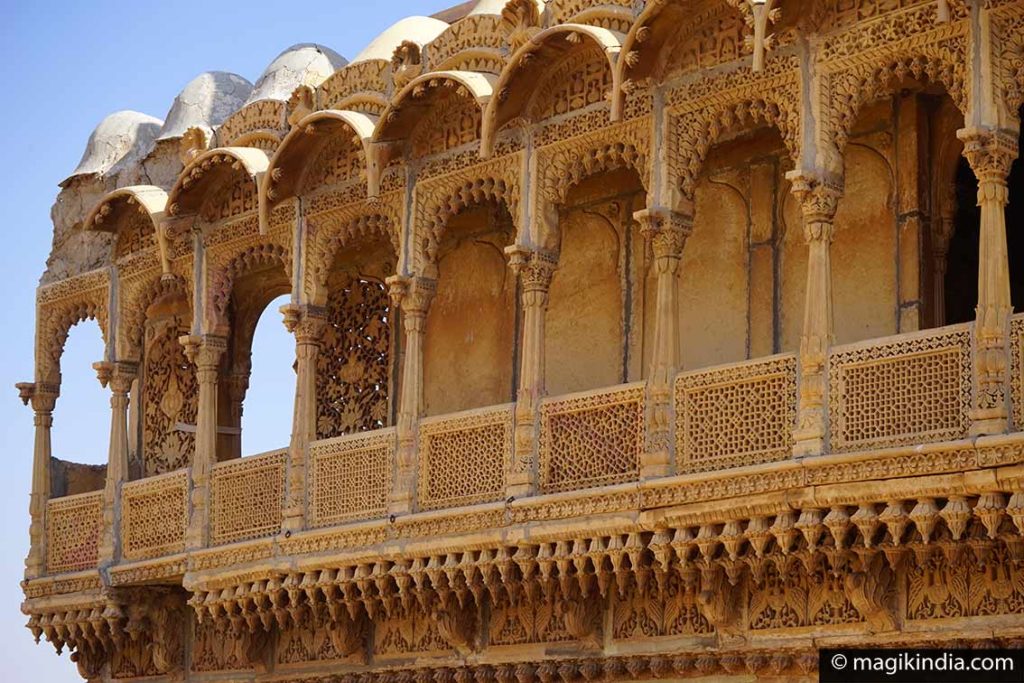
Gadi Sagar Lake
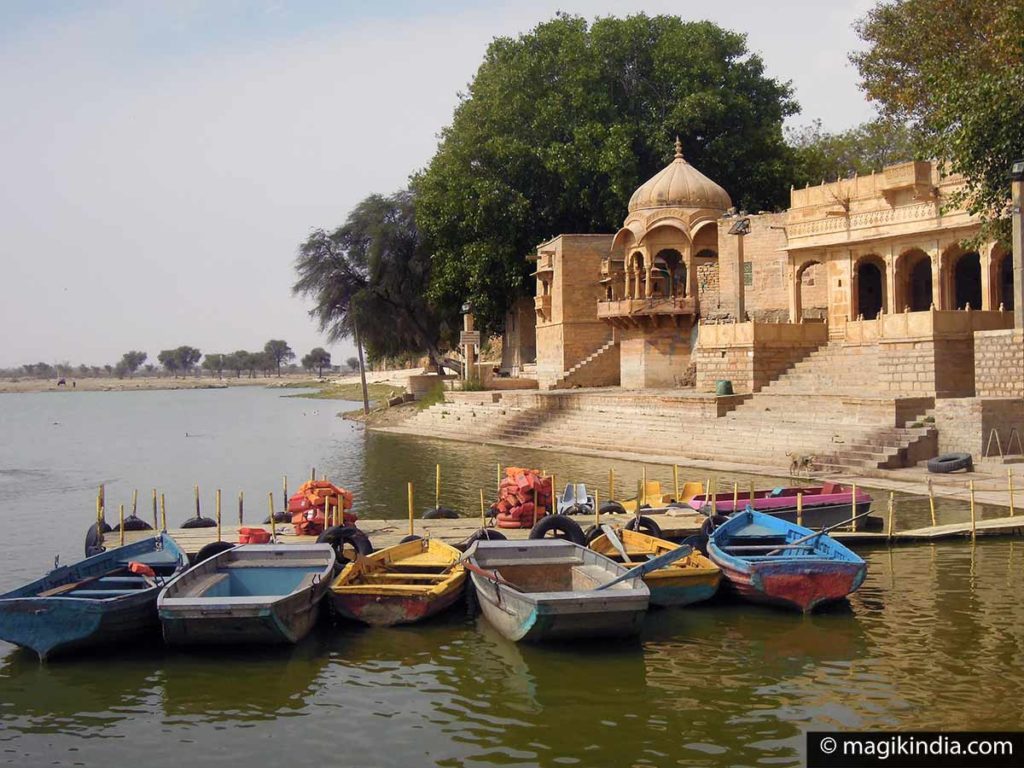
Gadi Sagar is an artificial lake, 2km from the fort, built as a rainwater reservoir. It was dug out in 1367 by Rawal Gadsi Singh, the first Maharaja of Jaisalmer. Until 1950 it was the city’s only water supply.

It is reached through the Tillon Ki Pol gateway, built in the late 19th century by a courtesan named Tillon.
There are many temples by the lake, and some small pavilions built directly on the water that give the place a distinctly romantic charm.

Gadi Sagar lake Museum
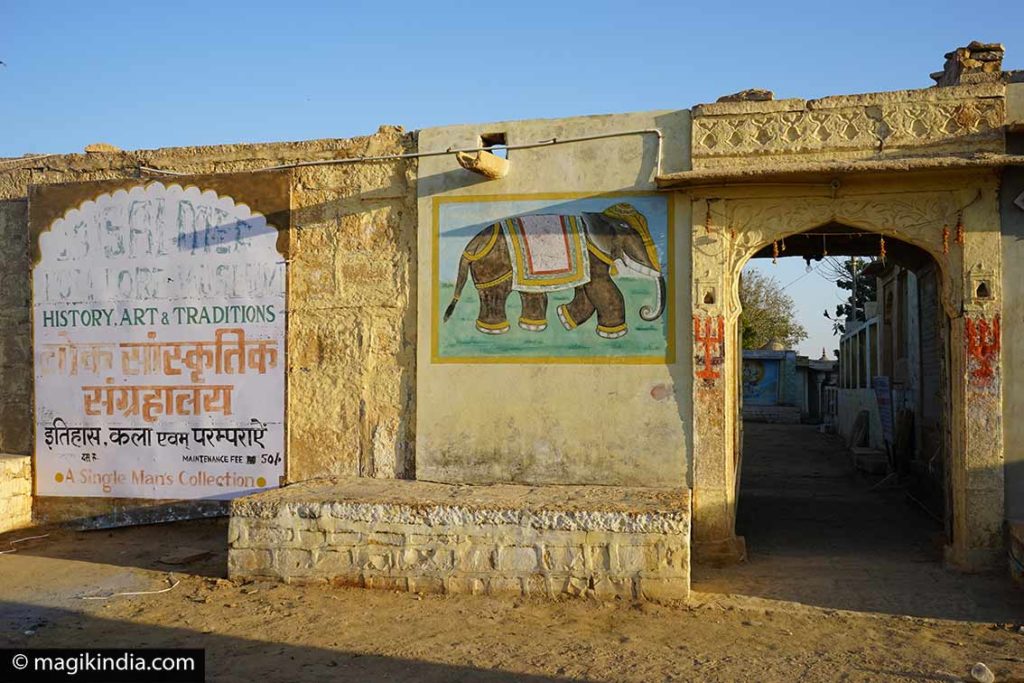
This small museum to the right of the Tillon Ki Pol belongs to a private citizen. It is a mine of information about Rajasthani culture.
The host, whose father created the museum, will give you a lively guided tour of the museum, with a touch of humour (He speaks excellent French too).
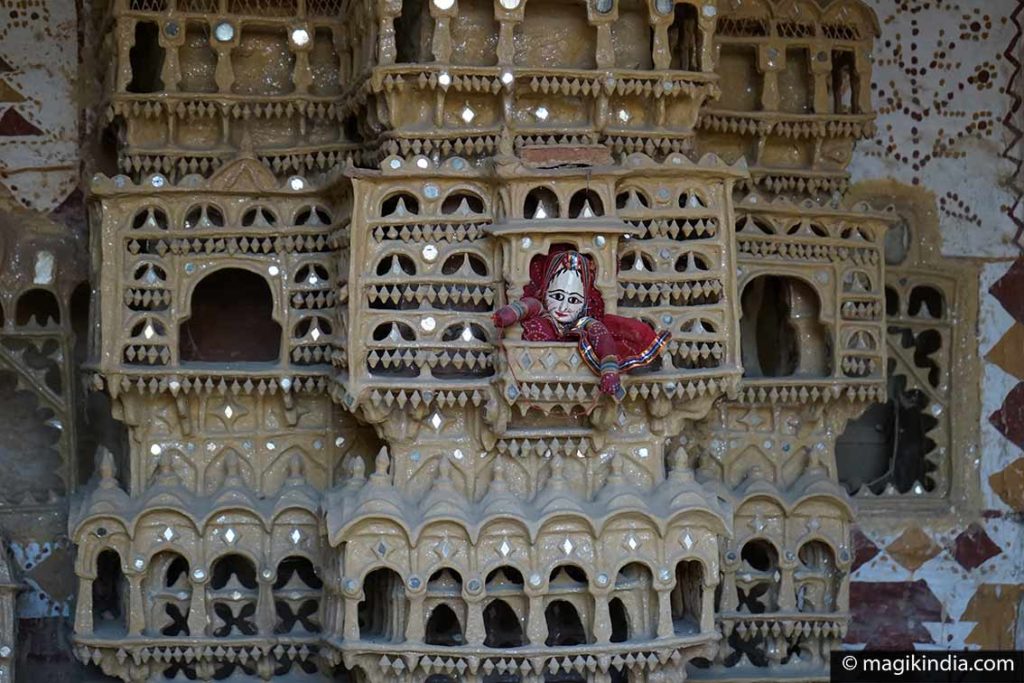
Bada Bagh (6km)
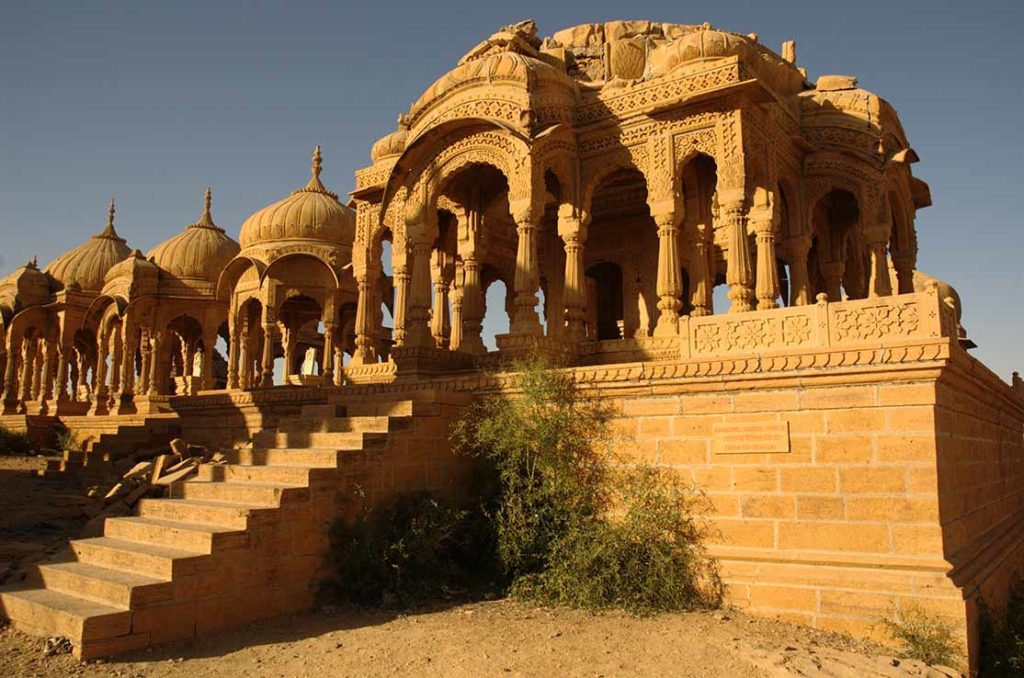
The Bada Bagh (“big garden”) is a group of cenotaphs or chhatris 6km north of Jaisalmer. These are the cenotaphs of the Jaisalmer Maharajas since 1743. It is a pleasant place, to be seen preferably at sunset when the yellow stone of the monuments blazes.
Lodhruva Jain temple (15km)

Lodhruva village, 15km northeast of Jaisalmer, was the first capital of the Bhatti dynasty before they moved to Jaisalmer.
Lodhruva temple is a Jain temple dedicated to Parshvanath, the 23rd Tirthankara.
Destroyed in the 12th century and rebuilt in 1970, it is a gem of a temple, with finely carved jalis (latticed screens) and torana (arch).
Ghost town of Kuldhara (20km)
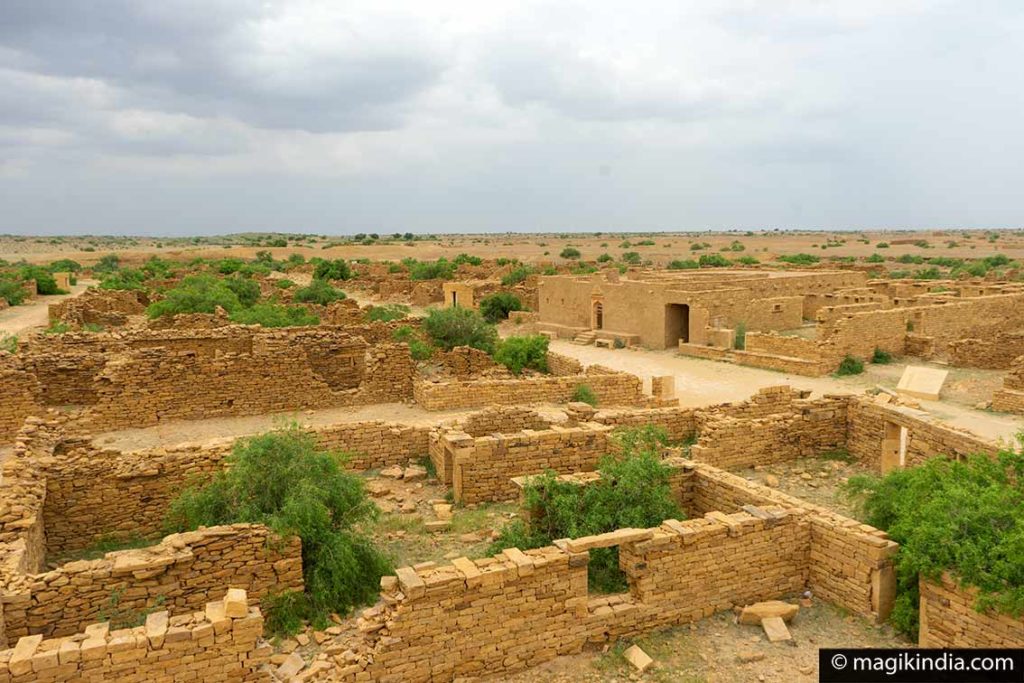
On the road to the dunes of Sam, 20 km from Jaisalmer, stands the ghost town of Kuldhara. The desert has swallowed up a large part of the city, but there are still some fine remains here and there that testify to its past wealth.
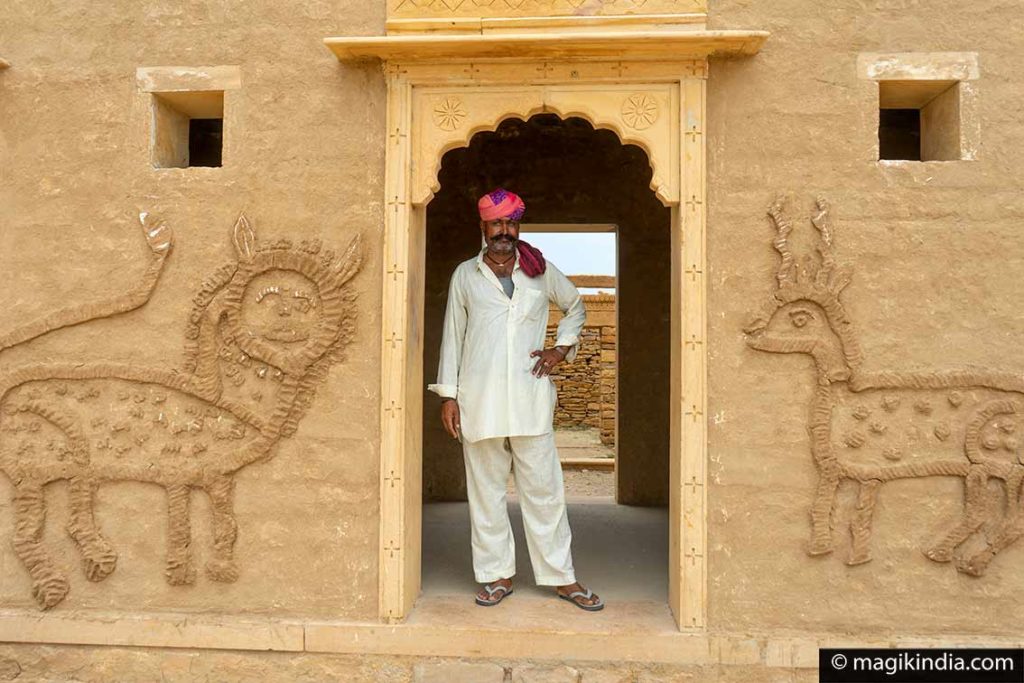
It is said that the 300 souls of Khuldara, the Paliwal Brahmins, deserted the village in one night so as not to have to offer a local tyrant a different young girl each evening. Actually, no one really knows why the villagers suddenly left this village… The mystery remains…
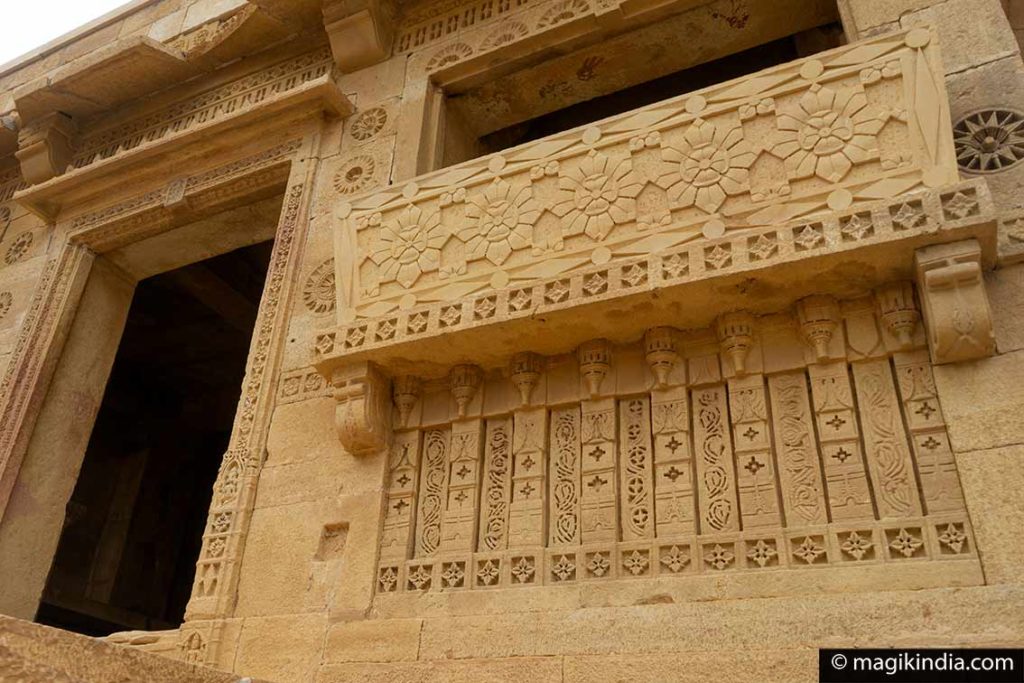
Khaba fort (40km)

Fifteen kilometres from the ghost town of Kuldhara stands a fort once occupied by the Paliwal Brahmins.
There is nothing of great interest inside other than the view and a few craftwork items.
Around the fort are the ruins of the homes of 80 families who lived here for over 200 years.
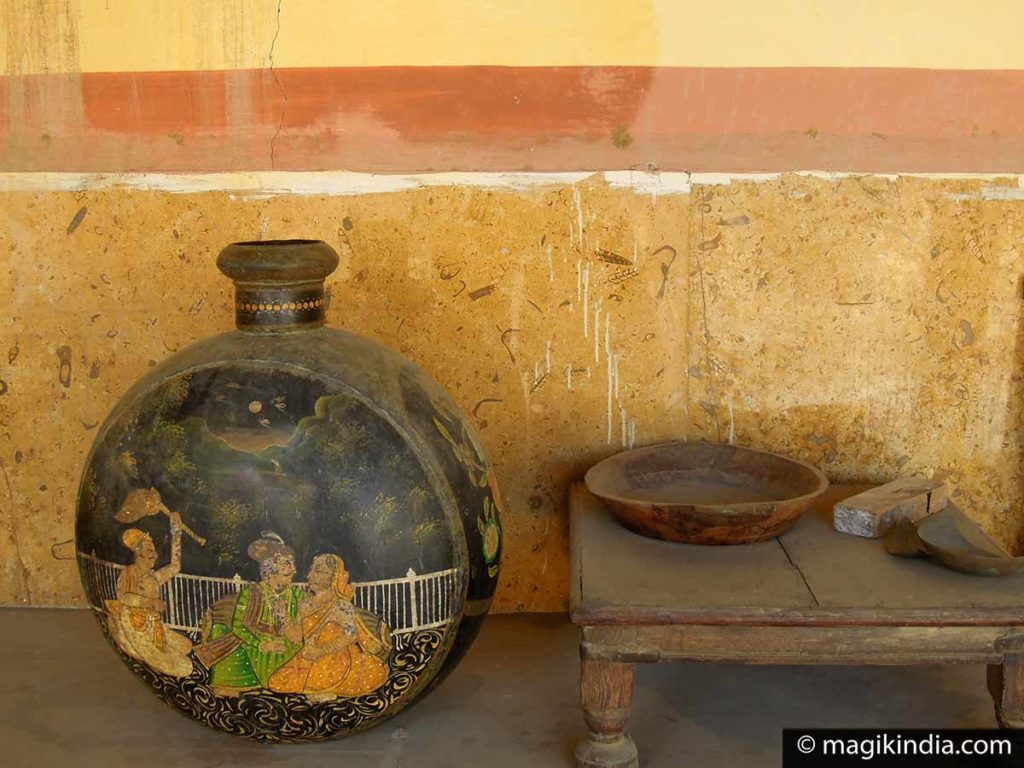
Sam and Khuri Dunes (40km)
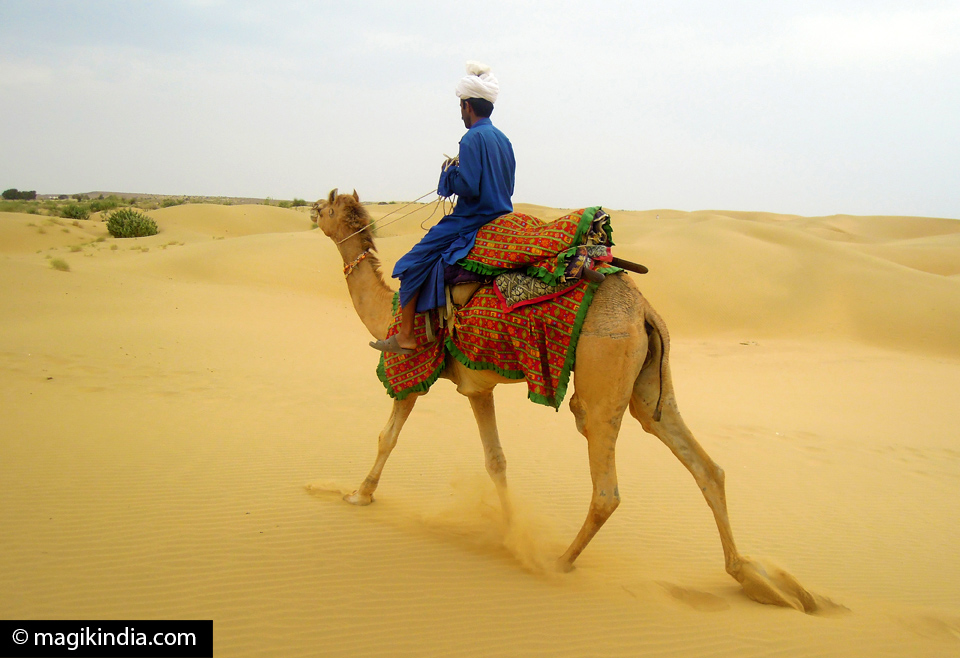
The Sam and Khuri dunes offer a good glimpse of the Thar desert, but unfortunately they are very touristy. Insist with agencies that they take you to wilder parts of the desert or better, contact me! The Thar Desert is my specialty. For several years, I have organized photo-tours in the most remote parts of the Thar desert where you will not see a single tourist.

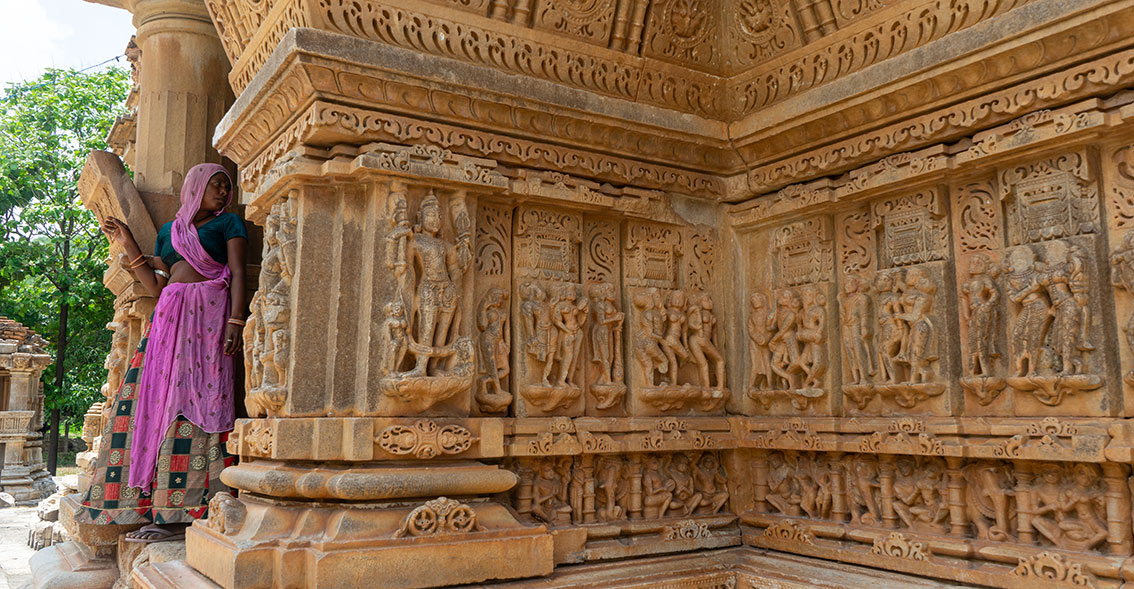
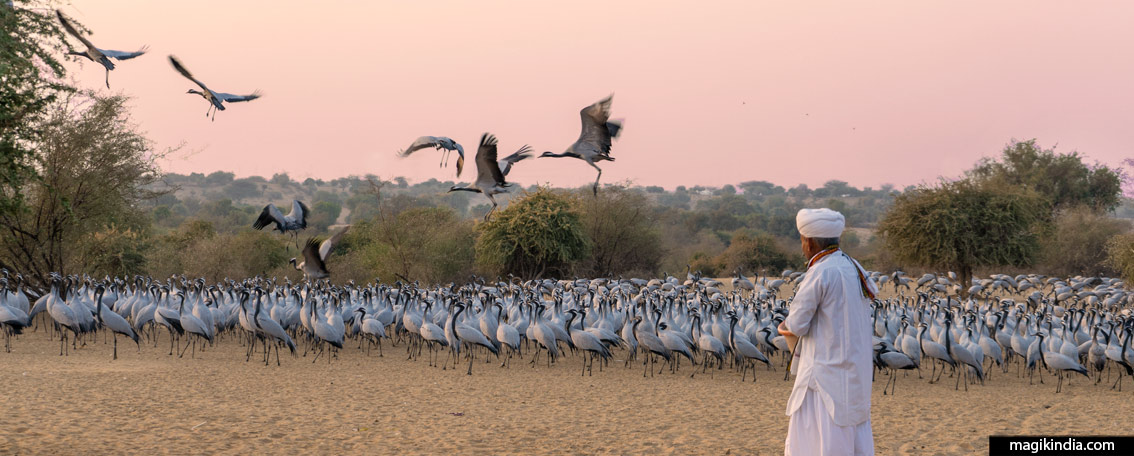
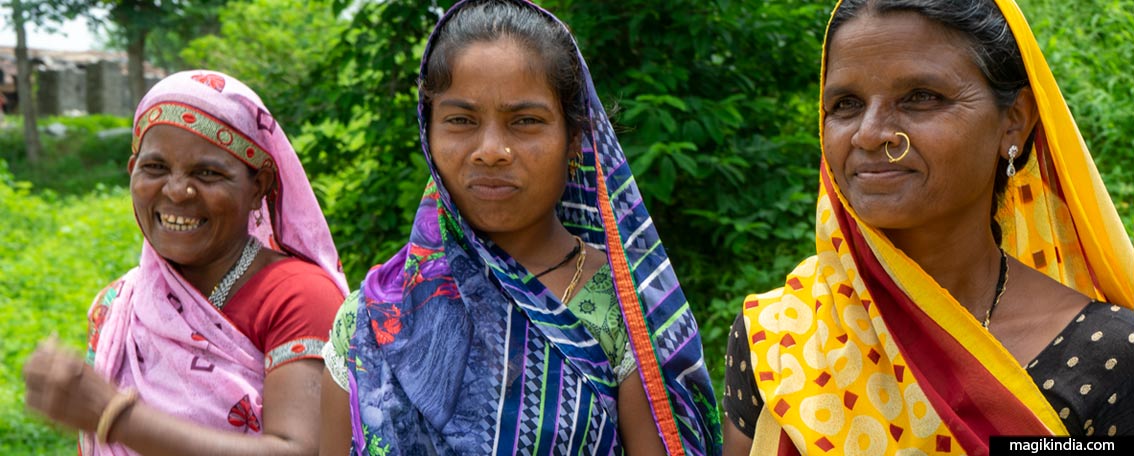
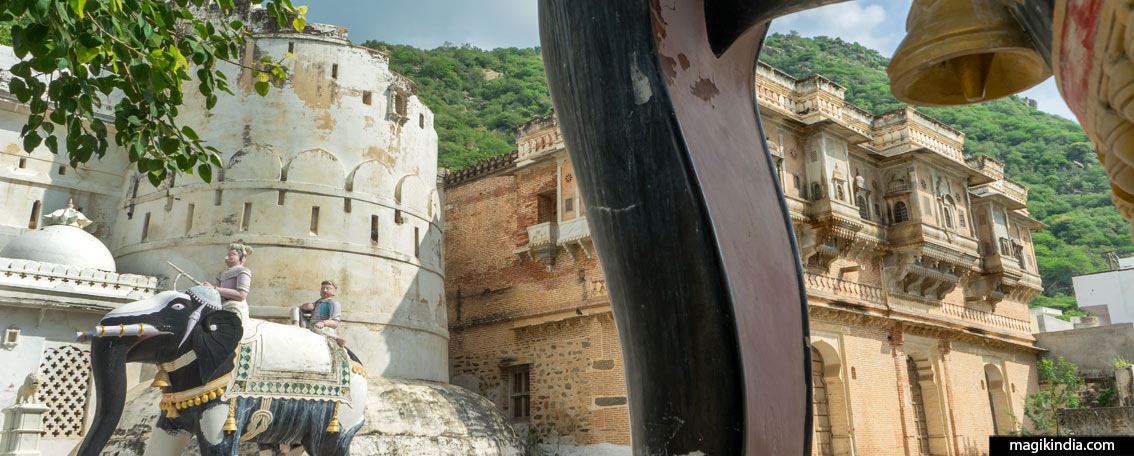
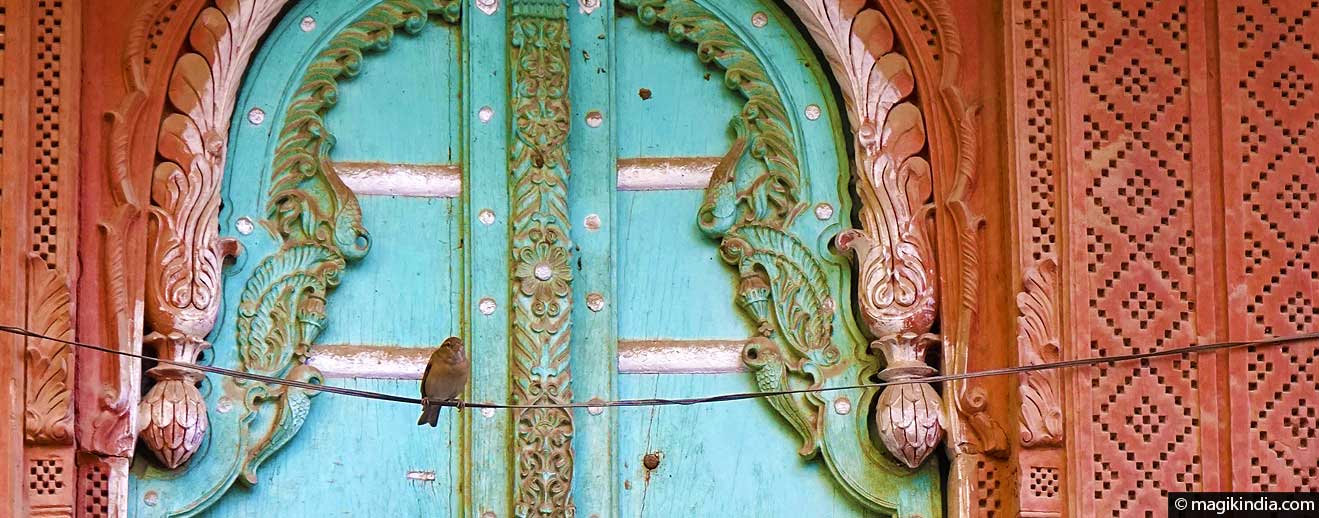
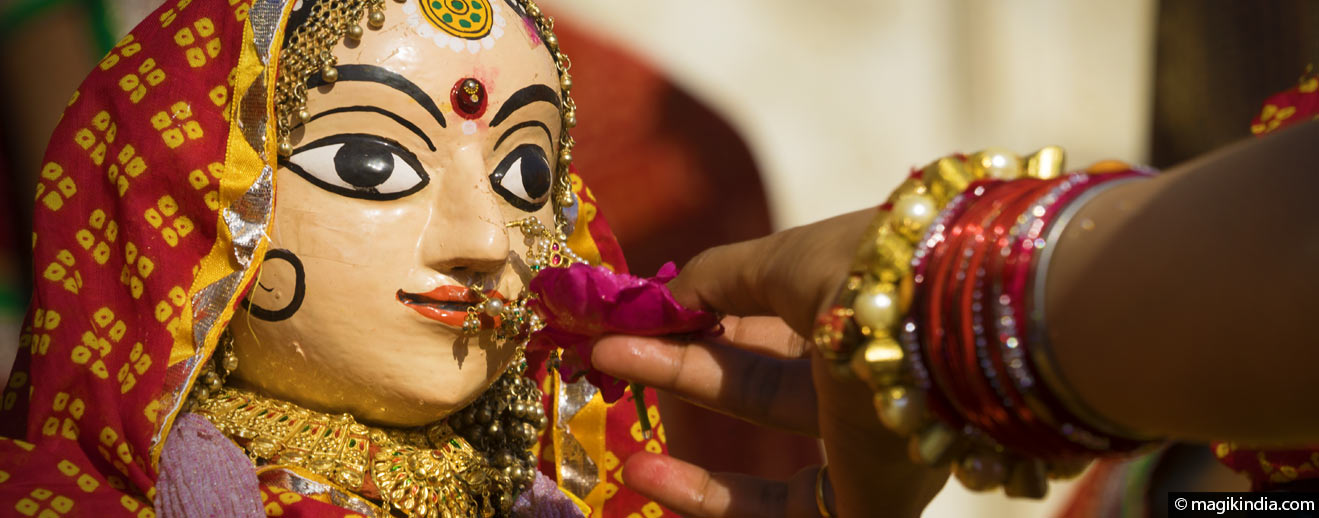
Jaisalmer – The Golden City. Venture into the heart of the Thar Desert, where the sands shimmer like gold under the blazing sun, and you’ll find Jaisalmer, the Golden City. The sandstone structures, including the iconic Jaisalmer Fort, bathe in a warm, golden glow during sunset.
thanks for your interest in my blog but please don’t advertise your company there. regards